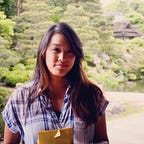Procedural Tooling Processes
For my last project before the end of the fall semester, I looked at the process between carving a sculptural piece versus a CNC’d version of the same thing. I wanted to explore the process of creating something, and how the material guides me to produce something unique compared to a computational process that does not consider the external forces such as material literacy.
Step 1 — Hand Carving
I built a mechanism attaching a 9V battery to a microswitch and a single white LED pin. I attached this simple setup to a hand gouge, and took a long exposure photo while carving.
I tried a few initial passes before doing the full carving and managed record the path taken by the carving gouge. I’m really interested in the visuals produced by this since the process photo of the path reveals components that aren’t necessarily seen in the final product. The materiality really guided me in which direction to take the tool, unlike the CNC machine.
Step 2 — Computer Numerical Controlled
I modeled the same piece in Rhino3D and sent the .stl file to the CNC machine. I decided to have each pocket carved separately, as opposed to carving horizontally and vertically, which the roughing passes did. I attached an LED light and also traced the path that the drill bit took.
Analysis
Comparing the two side by side, the long-exposure photos show the processes taken when creating the final product. When hand carving, the material would show me which way to direct the gouge. If one area seemed too deep or had splintered off, I would avoid that area for awhile. Since I was carving curves, I would also start from the high points and go inwards towards the deeper areas in order to avoid grain tear out.
With the CNC’d version, I failed to consider the grain of the basswood — it created a “hairy” feeling on one side because of how soft the wood is.
